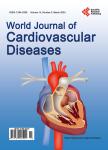Contemporary therapy of atrial fibrillation
Contemporary therapy of atrial fibrillation作者机构:Division of Cardiology Prince of Wales Hospital The Chinese University of Hong Kong Hong Kong China
出 版 物:《World Journal of Cardiovascular Diseases》 (心血管病(英文))
年 卷 期:2012年第2卷第3期
页 面:111-117页
学科分类:1002[医学-临床医学] 100201[医学-内科学(含:心血管病、血液病、呼吸系病、消化系病、内分泌与代谢病、肾病、风湿病、传染病)] 10[医学]
主 题:Atrial Fibrillation Antiarrhythmic Drug Anticoagulant Therapy Antiplatelet Therapy Cardioversion Catheter Ablation
摘 要:Atrial fibrillation (AF) is estimated that by 2010, approximately 2.6 million people will be affected in USA;by 2050, that number may increase to 10 million patients. Generally, rate control alone is reasonable in some AF patients, especially asymptomatic patients. Restoration and maintenance of sinus rhythm (SR) may be achieved by means of cardioversion, drugs or/ and catheter ablation. Pharmacological therapy can be useful to maintain SR and prevent tachycardia-induced cardiomyopathy. All patients with AF regardless of whether a rhythm or rate control strategy recommend anticoagulant, antiplatelet or both combined therapy for prevention of thromboembolism, except those with lone AF or contraindications. Drug selection should be based upon the absolute risk of stroke, bleeding, the relative risk and benefit for a given patient. Biventricular pacing may overcome many of the adverse hemodynamic effects associated with RV pacing alone. A target individual ectopic foci ablation within the pulmonary vein (PV) has evolved to circumferential electrical isolation of the entire PV musculature. Cavotricuspid isthmus should be considered as first-line therapy for patients with typical atrial flutter. Completely non-fluoroscopic ablation guided by Real-Time Magnetic Resonance Imaging (RTMRI) using a steerable and non-ferromagnetic catheter is a promising novel technology in interventional electrophysiology.



